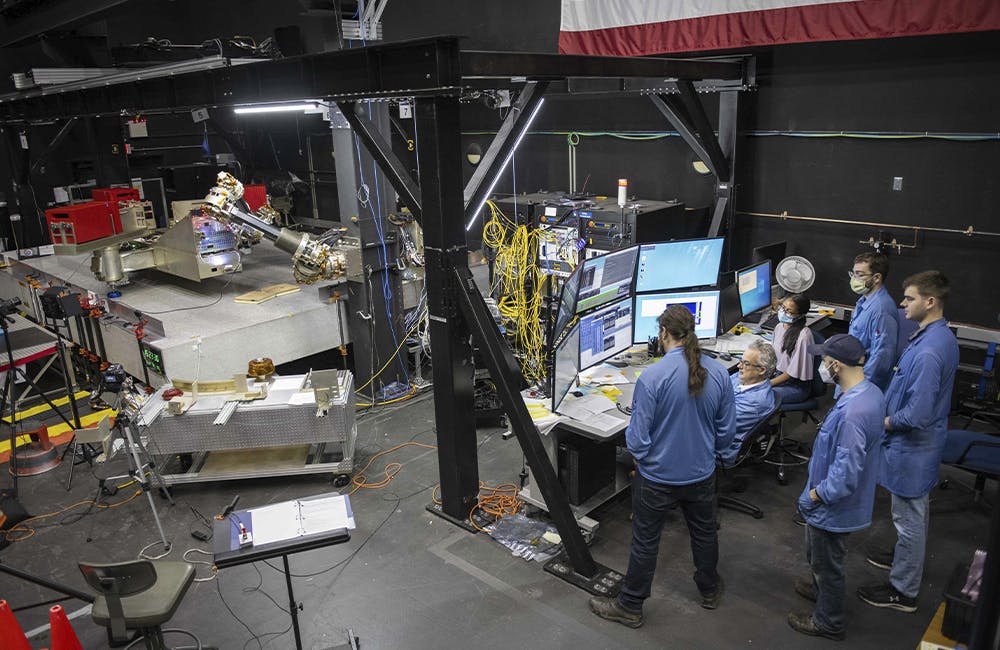VA Sees Workforce Reforms Necessary for DevOps Adoption
The agency is focusing on changes in training and culture that foster the adoption of agile development methodologies.

The official leading the charge in bringing a DevOps framework to the Department of Veterans Affairs says training is key to the agency facilitating its overall digital modernization.
Training and workforce reform play critical roles in the agency’s broader IT transformation, said Director of DevOps Implementation Patty Craighill at the March 10 ATARC Federal DevOps Summit. This led to a particular focus on familiarizing VA employees with methodologies most conducive to product development.
“My biggest focus has been the people … issues of workforce transformation and how to modernize the workforce. And that led into adopting DevSecOps and product line management at the VA and thinking about the impact that has on our workforce,” Craighill said.
Craighill was quick to recognize that substantial changes in agency IT are dependent on empowering those who manage VA systems to foster innovation.
“Moving to DevSecOps is really a culture change,” Craighill explained, “And if you don’t do the culture change, the rest of it won’t matter because it’s really hard getting everyone’s mindset to the right frame.”
This has involved a process extending across the VA, one focused on broader training in DevOps combined with familiarizing VA executives on how to manage a DevOps-focused workforce. This has required enabling a certain degree of institutional flexibility, particularly in allowing the autonomy necessary for DevOps projects to commence.
“It’s about building trust across the organization from the top down among the people — leaders trusting the people who are working for them, and the people who are doing the everyday jobs trusting their leaders are giving them good direction,” Craighill said. “That’s not actually so easy to do if you don’t already have a culture of trust and autonomy.”
This move toward wider DevOps adoption has been a recent development at the VA, one that has required patience in attempting to change a management culture tied to predetermined project outcomes and an annual funding cycle.
“We’ve spent years in this framework where we put all our money up front,” Craighill said. “Then we want to protect it, so we’ve invested in building a certain capability. We don’t want it to vary at all because we’ve predicted how much it’s going to cost, and we want to get to the end state and be done with it in the amount of money and time that we’ve projected.”
The development methodologies most conducive to modernization require a marked departure in the testing and design process, particularly in terms of incorporating customer feedback and human-centered design principles. Much of Craighill’s efforts have centered on reconciling these new processes with the VA’s typically regimented culture.
“The new way throws all of that out and says: get into your customers’ head, make room for change, we don’t have to nail everything down up front,” she added. “Success is not getting to the end point, but getting into a state of continual change and continuing to take risks. So you’re setting your organization up to keep improving and keep adding.”
One of the solutions Craighill implemented to foster wider DevOps adoption across the VA has been a process of training the agency’s workforce with the intent of empowering them to immediately begin using these new methodologies. This has been seen most prominently in the creation of mastery teams designed to quickly render knowledge into practice.
“We’ve come up with the concept of ‘mastery teams,’ which is the idea that if you’re going to get training — particularly technical training — and don’t use it right away, it’s almost worthless. You forget, and it’s hard to go back and remember what you learned. So mastery teams embody the concept of going to training as a team, and then being to use what you learned in training right away,” she said.
Similarly, the creation of change teams has been essential for smoothing the adoption of DevOps methodologies across the VA through reconciling institutional mandates with newer practices.
“How do we do cost control, how do we do budgeting? And how do we do acquisition differently when we start doing DevOps? So all of these ideas we turned into change teams where we invited volunteers to work with us,” Craighill said.
Looking forward, it’s clear the VA intends to foster Agile and DevOps practices on a more localized scale beyond the agency’s central Office of Information and Technology. This appears to be especially vital in fostering the VA’s transition to the cloud as local capacities are transitioned away from private data centers.
Craighill described this as a twofold process, one requiring both an education in DevOps practices, as well as staging environments where the VA workforce can safely test and pilot new implementations.
“We have a lot of systems that are not in the cloud yet, so we’re going to establish some reference implementations using DevOps tools and practices on legacy environments so folks who aren’t yet on the cloud can practice these principles,” she said. “We’re going to establish those in regions across the country so there are places where folks can go and try out the tools … We’re trying to make those available to anyone who wants to experiment.”
This is a carousel with manually rotating slides. Use Next and Previous buttons to navigate or jump to a slide with the slide dots
-

DOD Zero Trust Chief: ZT Implementation Requires Clearer Standards
Randy Resnick, director of the DOD Zero Trust Portfolio Management Office, announced an upcoming memo to eliminate ambiguity on its zero-trust guidelines.
5m read -

Report: Innovation, Emerging Tech Will Define Global Power Structure
A new report suggests a path to unleash innovation and partnerships to harness technology as a global superpower.
3m read -

DOD Software Factories Are Creating Innovation Culture
Defense leaders say the agility of software factories encourage innovation and reduce inefficiencies in critical defense programs.
3m read -

DISA HAC Director Shares Commercial Cloud Capability Progress for Indo-Pacific
Sharon Woods briefs updates on programs like Vulcan and OCONUS cloud.
8m read








